The "Architectures of Care" research exhibition/forum of the ARCH502 graduate studio, led by studio instructors Prof. Dr. Berin Gür and Alper Al, was held on June 13, 2024 at 12:30 PM in Studio E314. You can explore the 3D digital versions of our students' exhibited works in the interactive exhibition below.
Detailed information can be found at www.architecturesofcare.com
You can interact with the exhibits using mouse movements to rotate and WASD keys for navigation.
Generational trauma: Right to Remember
Belkıs Sena Top
As a next step of “massive body loss” research by Zeynep Kozoğlu and Belkıs Sena Top, “How not to forget?” was the concern as an issue of Architectures of Care. Conflict in the Balkans, in general, in the last century and, primarily, the Bosnian War between 1992 and 1995, is studied. Rather than studying monuments and memorials, I searched for new ways to not forget the loss. Real traces of War (unintentional monuments of War) are benefited. A semi-fictional apartment is created by bringing different pieces from the city as victims of War. Different narrated stories, which benefited from oral history, documents, and photographs, are located behind each opening—photographs as documents of victims are located behind holes generated by bullet scars. Also, the back side of the apartment displays keywords and explanations about the injustice of war and newspaper fragments from the world that emphasize the Bosnian War.
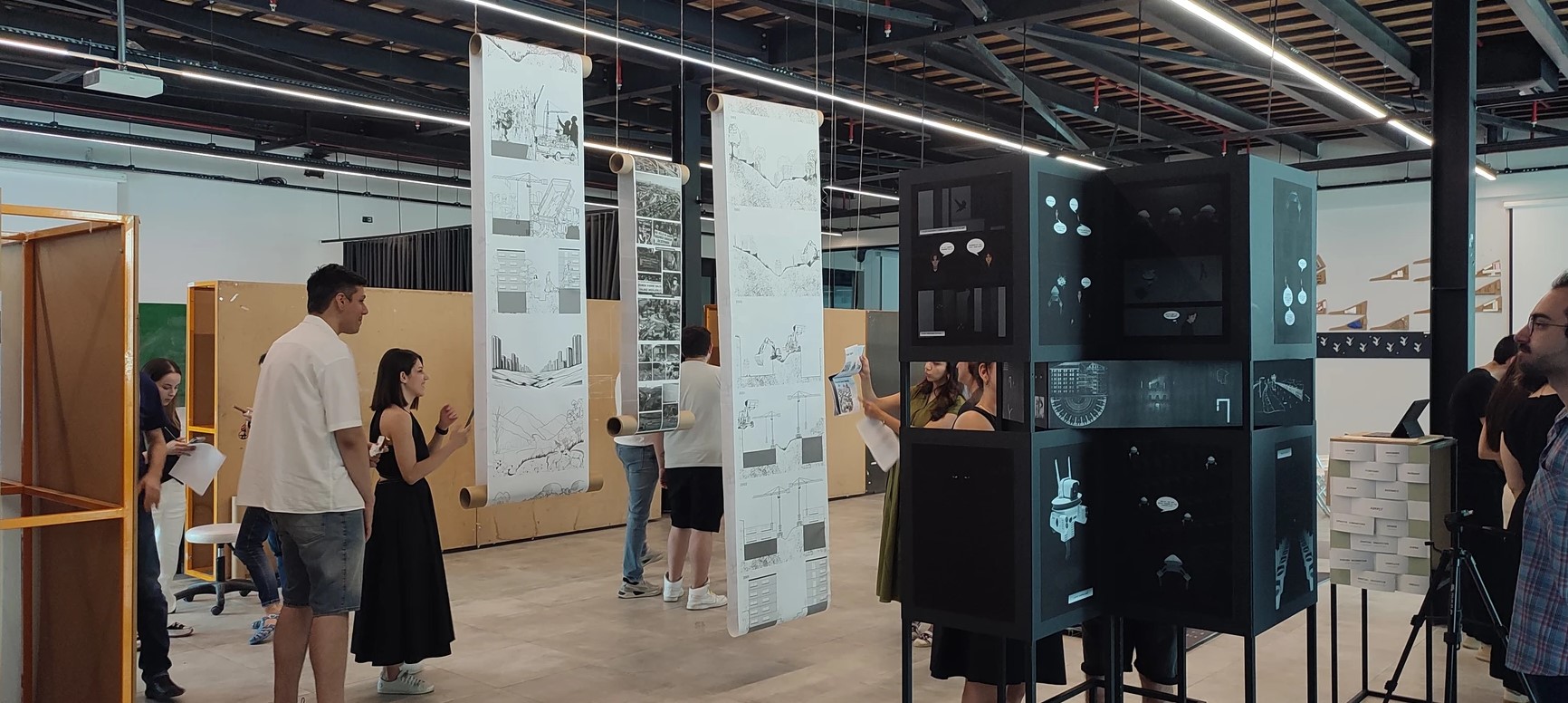
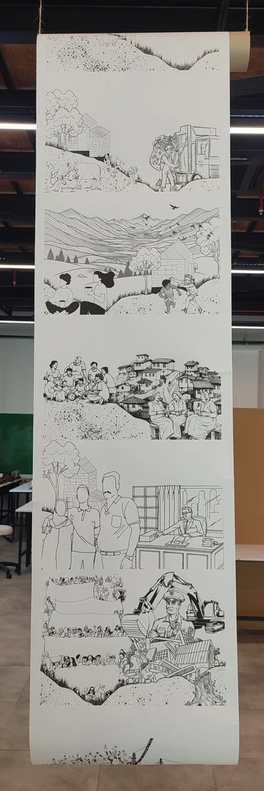

Retooling the Architecture: Learning from Informal Settlements in the Phase of Urban Regeneration
Büşra Bütün
This project primarily describes the urban transformation process of Dikmen Valley, one of Ankara’s critical regions. Through analysis, I show how change took place over the years. Dikmen Valley of the 1930s gradually came into view with all its natural beauty. However, since the 1970s, construction in the valley has accelerated due to the increasing population and the need for urbanization. Construction increased further in the 1980s and 1990s, leading to the loss of green areas in Dikmen Valley, which transformed into a concrete-heavy landscape. By 2005, the valley had become an entirely urban area. In this process, we can observe visually how the valley loses its natural state and becomes more concrete. The booklet, which contains essential information on this subject, attempts to answer how urban transformation projects can be carried out more sustainably and what should be considered.

[Un-]registered Ege: Ship as an agency of care
Deniz Yeni
This study situates itself in the archipelago of the Aegean Sea, suggesting an alternative reading for the unseen border architectures and politics of maritime space between Türkiye and Greece. Reading the Aegean Sea as a third body manifesting in physical and political realms redefines this body of water as a witness to the displacement, misplacement, and replacement of human and non-human ecologies. Having a thick repository of events and conflicts through history, the Aegean Sea claims a new discussion ground for architectural humanities through the displacement and replacement of human agencies, varying from the population exchange as an outcome of the Treaty of Lausanne in 1923 to the present-day migration and refugee crisis, spanning the last hundred years, exploring the notion of generational trauma. Through tracing the movement and acts of the circulatory vessels, be it the inflatable boat or the coast guard, the exhibited thick map of interdependent relations connotes the vulnerabilities and heterogeneities of care by defining critical cuts (in lime green) and the Assembly of Care (Umur Kurulu). The matrix corresponds to various types of planimetric instant drawings of institutionalized acts that utilize the water body as an element of aggressive deterrence, intervention, and an intermediary carriage, such as push-back incidents, illegal trafficking, alien species carried with the ballast water, and registered boats of population exchange. These registered and unregistered members of the Assembly, although leaving them behind a trace in the water, the wake—create an untraceable notion of motion.
Afterlife of the Hole: Dystopia and Utopia
Ece Kavasoğlu
Mining holes in the Muğla region are stark reminders of our relentless pursuit of raw materials, which has left wounds that scar the land and its people. Villages suffer displacement, traditions fade, forests are cleared, and nature is forgotten in the quest for resources. The increasing need for raw materials has driven the exploitation of new mining areas, often at the natural world and local communities’ expense. In Muğla, the land bears the scars of this exploitation, with open mining holes and deforested areas representing the physical and emotional wounds inflicted on the environment and the people. The displaced villagers, whose lives and traditions are uprooted, symbolize the cultural loss and social disruption caused by mining activities.
This project delves into these deep fissures in our environment and society, exploring potential futures through a series of dystopic and utopic scenarios. Through a series of scenarios, the public is invited to reflect on the consequences of current choices and envision a future where nature, tradition, and community are preserved.
Control over the body in prison architecture: Spatial extremities
Ekin Meşe
The research contains two consecutive phases: Profiling institutions of control over the body and studying the spatial extremities in prison architecture through the narrative medium of comics. The outcome of the first phase includes documented files from four different institutions: prisons, zoos, refugee camps, and police stations. The second phase, on the other hand, mainly focuses on the first institution, the prison. The use of comics unveils the architectural qualities in an empirical sense through sequential frames. Those frames are ordered anachronic, simultaneously implying various conditions extracted from the research. The viewers follow the body through varying conditions of architectural spaces. Although the project contains distinct references, they are gathered in the same universe with a similar language. Piranesi’s Imaginary Prisons (1749-50), Jeremy Bentham’s Panopticon (1791), and Gabu Heindl’s Out in Prison (2011) are examples of these references.
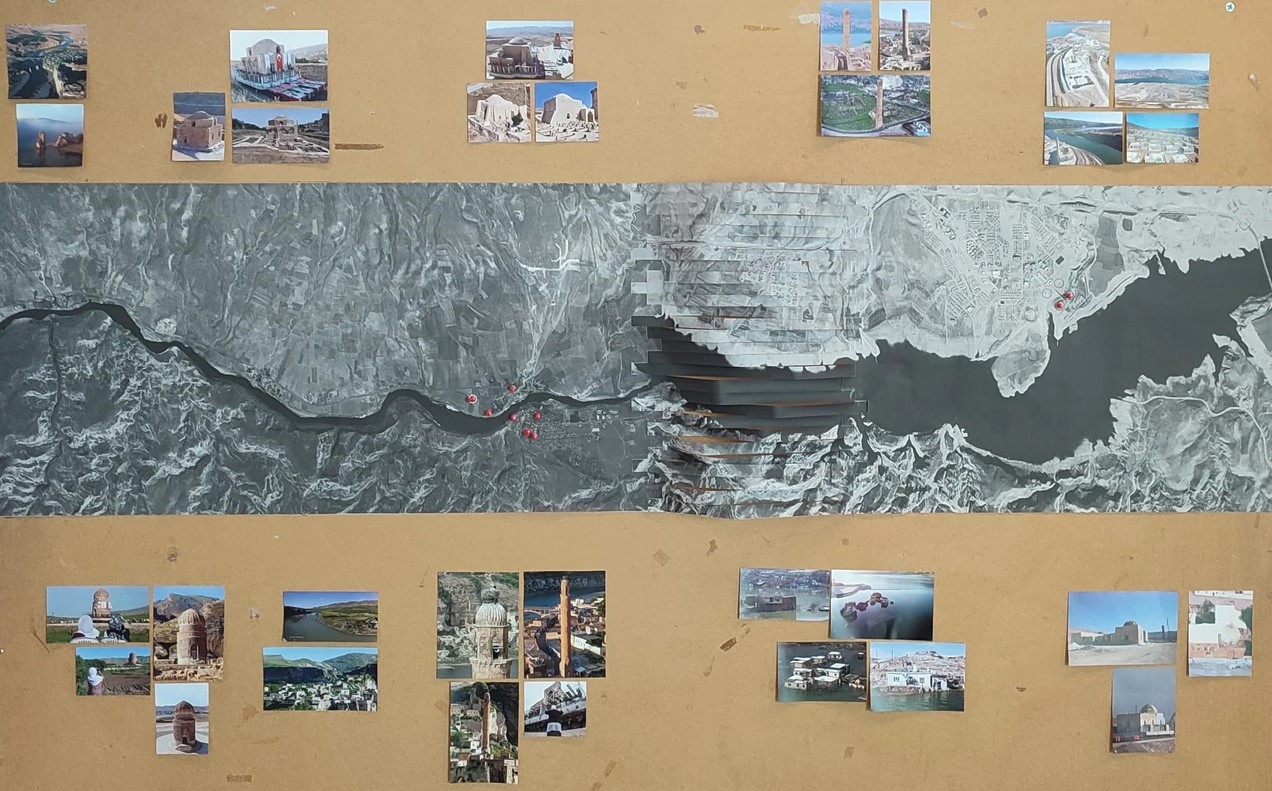
Error! Displacement and loss of heritage
Esra Durmaz
Hasankeyf, located today in the Batman province of the Southeastern Anatolia region, is a historical region that has witnessed 12 thousand years of history. Locating on the Tigris River’s banks has made the Hasankeyf settlement of geographical and strategic importance. The city has become an important center connecting Northern Mesopotamia to Anatolia. It plays a vital role as the historical reflection of a region that has witnessed many civilizations. The area’s dominance, which started with the castle at the top of the mountain, was depicted with historical buildings and houses spread across the mountain’s slopes. Historical buildings and houses, as well as the landscape and nature of the region, are involved in people’s daily lives, both economically and culturally. The Ilısu dam in this region has been on the agenda since 1951. The dam, completed in 2020, flooded the entire settlement. Hasankeyf, an ancient settlement, was partially relocated and flooded due to dam construction. Before it was flooded, a new settlement was built on the opposite side of the river. In this process, historical buildings were moved to the newly built settlement area by vehicles to prevent flooding or damage. However, other structures were submerged. Observing the year-to-year changes on the maps reveals abrupt shifts and destruction. The glitch technique was used to highlight these sudden displacements of buildings. This phenomenon was seen as an error.
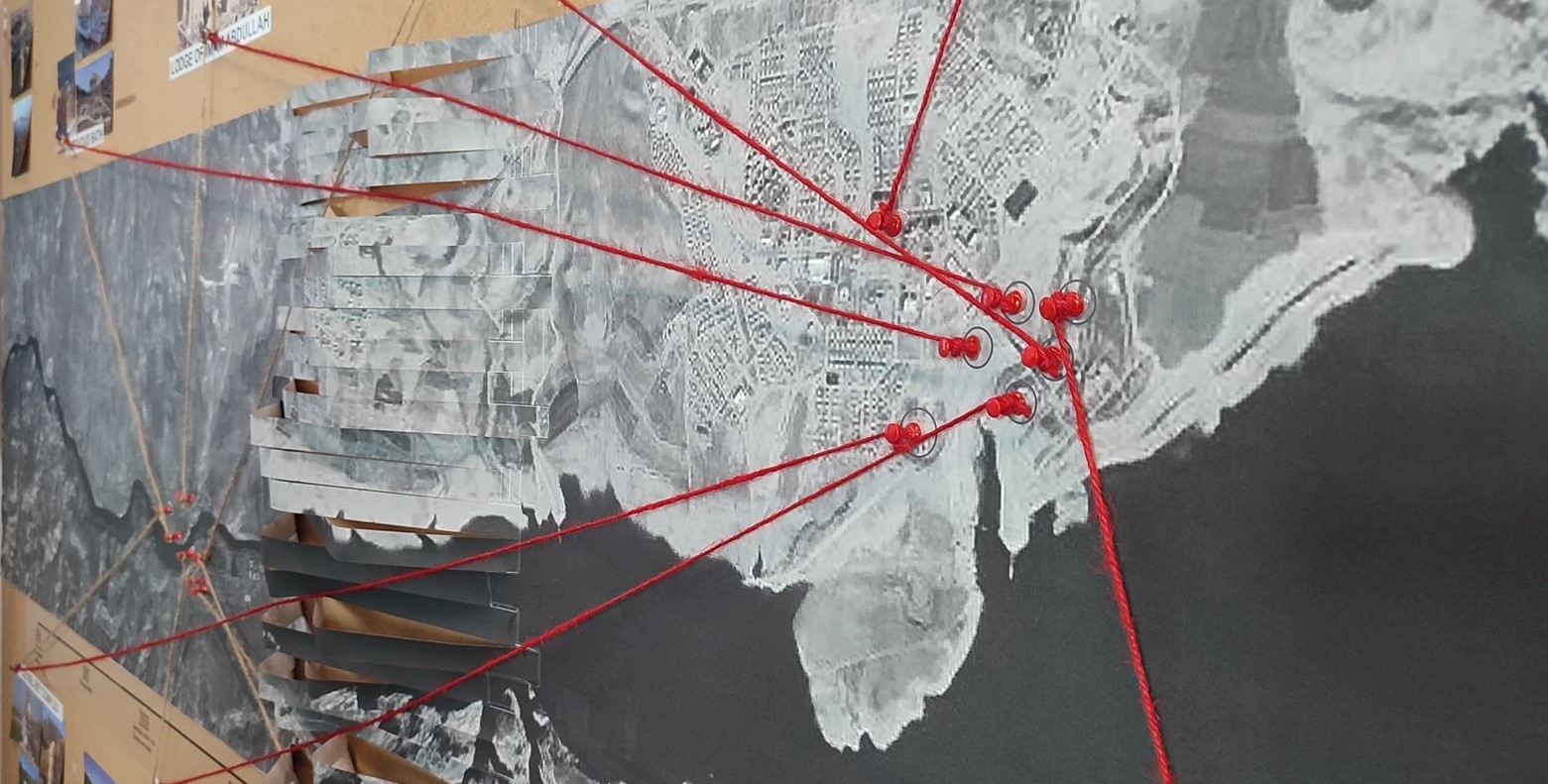

Forensic Architecture as the truth-making effort in the Anthropocene
Kian Shamshiri
The ISDEMIR factory, located in Hatay and encompassing the neighboring city Iskenderun, presents a complex industrial impact on the environment. This research delves into the multifaceted environmental repercussions of the factory’s operations, focusing on air, soil, and water pollution. It expands on this by exploring the factory’s ports and extensions towards the sea, evaluating their consequences on the surrounding marine environment. I focus on the factory’s seaports and their extensions towards the sea (landing and landfilling in action) by using the forensic evidence-making methodology to subject a set of keywords. These are highlighted individually in the provided “keymap.” These extensions facilitate the transportation of coal and other materials and cause significant marine pollution, among other things. The research investigates the environmental impacts on humans, non-humans, seas, and water bodies, considering the visible and underlying consequences. The forensic investigation employs a 3D Alphabet/Number matrix “keymap” to identify critical impact areas. This map is a foundational tool for exploring individual subjects related to the factory. A storyline algorithm guides readers and offers additional sections for in-depth discussions and recommendations. It ensures a comprehensive understanding of the factory’s environmental impact and comprises 16 designed sheets containing visuals, maps, technical drawings, and satellite images.

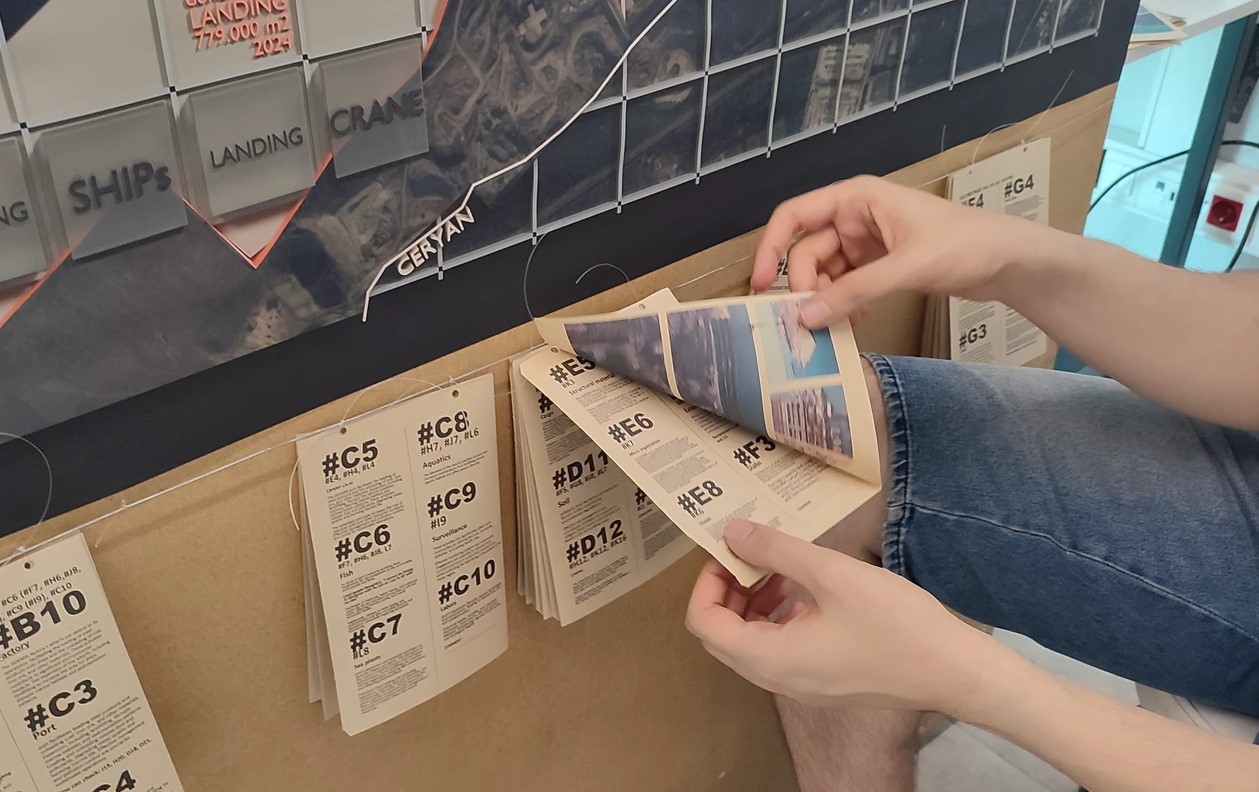
Aşefçi women as a caregiver: Invasion and invasive companions
Türkan Sude Sakalar
Conflict broke out in Sur, a district of Diyarbakır, in 2015 with the decline of the Kurdish peace process and the region-wide strife that followed. This process has brought about issues of forced migration and social-cum-spatial injustices. Thousands of people in Sur had to evacuate their homes, hoping to return one day. The research focuses on the fertile Hevsel Gardens, situated on the banks of the Tigris (Dicle) River in Diyarbakır and embracing Sur, which has been a crucial source of sustenance for the city and a natural habitat for wildlife since ancient times. However, today, agriculture has a noticeable decline compared with the pre-conflict period in Hevsel. So, the research introduces Aşefçi women who work in the Hevsel Gardens to meet the city’s vegetable and fruit needs as caregivers. “Aşef” refers to planting seedlings, which involves clearing out invasive plants around the planted seedlings and examining and selecting them. Thus, Aşefçi performs this task, clearing out invasive plants and cooking them, which I call “invasive companions,” recalling Donna Haraway’s “companion species.” Aşefçi’s kitchen serves delicious recipes with invasive companions (such as ebegümeci/tolik, pirpirim/semiz otu, and naneçuçe/kuş otu) and brings everyone together around the “sofra (table).”
Earthquake in reverse time: From disaster to injustice
Zeynep Kozoğlu
Massive Body Loss is a website that Zeynep Kozoğlu and Belkıs Sena Top created as a collaboration. It documents and provides an open-source digital source of events in and around Turkey that have caused massive body losses over the last century. I research Antakya’s devastating earthquakes. The project superimposes past earthquakes with the latest February 6th, 2023 earthquake, using the mirror as an element for superimposition. This layered approach emphasizes Antakya as a palimpsest city, revealing its historical layers and highlighting the continuous impact of these disasters on the city’s fabric. The research delves into maps, archival photographs, oral history, and historical letters to comprehensively view earthquakes throughout Antakya.